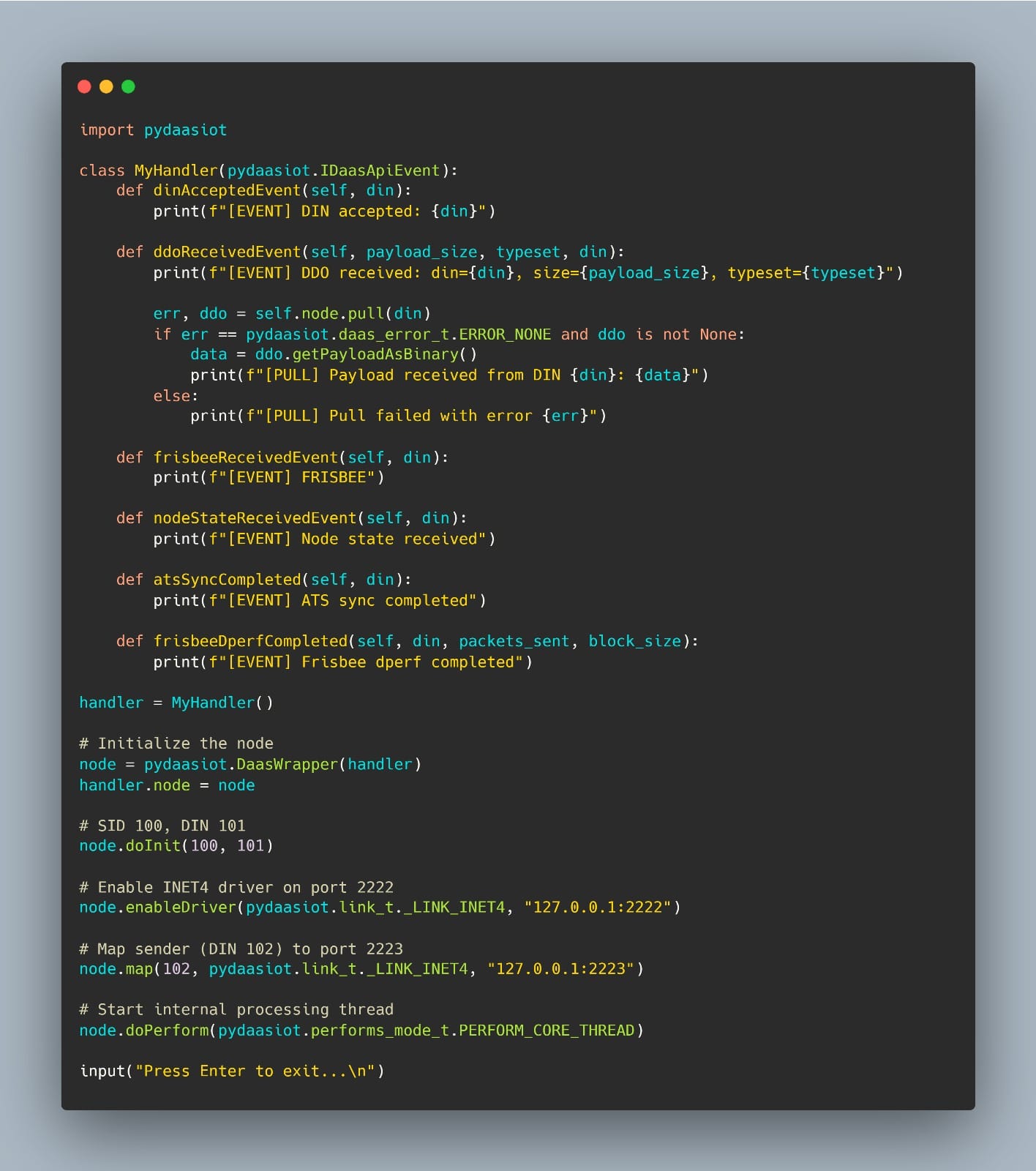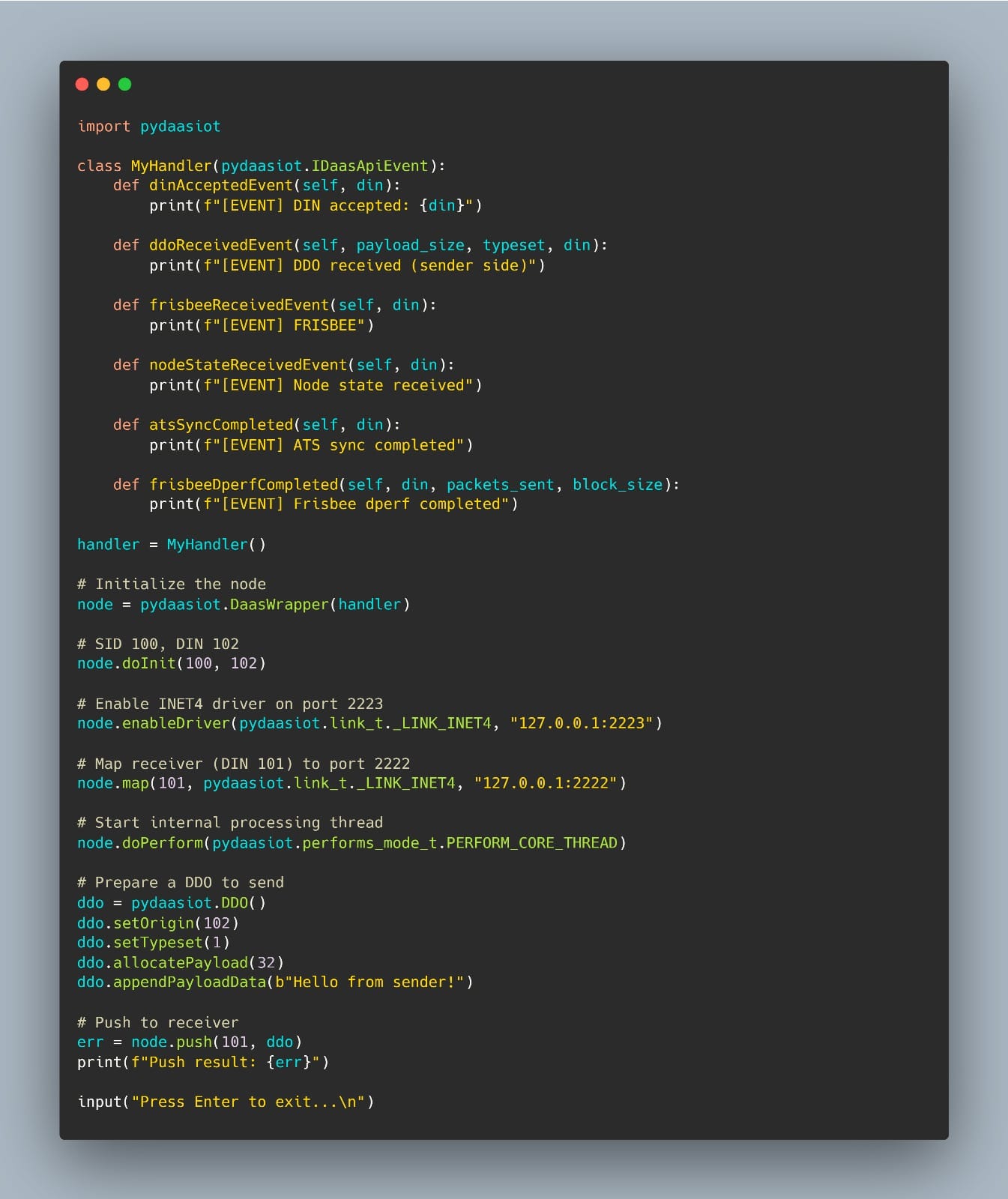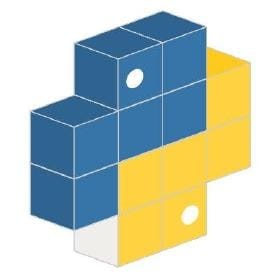Table of Contents
Introduction
We’re excited to announce the release of pydaasiot — the official Python bindings for the DaaS-IoT SDK. With pydaasiot, the core capabilities of DaaS-IoT are now accessible from Python, enabling seamless integration of distributed communication, time synchronization, and overlay networking into Python-based systems.
Built for Developers, Ready for Production
The DaaS-IoT SDK is engineered for high-performance IoT deployments. It provides a robust abstraction for overlay communication between devices, with support for multiple link types, time synchronization, and data delivery mechanisms. Until now, these capabilities were only available through C++.
With pydaasiot, you get the same low-latency, event-driven architecture in Python — without the overhead of dealing with native code or cross-language wrappers. This is ideal for rapid prototyping, algorithm testing, or embedding reliable device communication inside Python-powered pipelines.
Key Features
Full Python Access
Complete access to DaaS-IoT primitives directly in Python with native Python interfaces.
Event-Driven Architecture
Utilize Python callbacks for handling events, incoming data, and synchronization events.
Cross-Platform Support
Prebuilt wheels available for Windows and Linux with consistent API across platforms.
Network Abstraction
Support for various drivers including INET4, Bluetooth, and other communication links.
Practical Integration: Sender/Receiver Setup in Python
Here’s what real-world usage looks like using pydaasiot.
1. A sender node initialized, sets up a network driver, and pushes a DDO to a mapped destination.
2. A receiver node listen on its own driver port, pulls incoming payloads, and handles them via registered callbacks.
Receiver Node (DIN 101)

Sender Node (DIN 102)

Behind the Scenes
This sender/receiver setup illustrates a few key concepts in action:
DDO (Data Delivery Object)
The core unit of communication. Payloads are encapsulated and routed via node DIN identifiers.
DIN/SID Identifiers
Unique identifiers to distinguish nodes and manage network routing and addressing.
Driver Abstraction
Using INET4 over loopback in this example, with support for Bluetooth and other communication links.
Event-Driven Architecture
Handlers allow your application to react to incoming data, time sync events, and node state changes.
All of this happens over an overlay network managed by the DaaS-IoT layer – you don’t need to deal with sockets, protocols, or serialization.
Ready to Try It?
You can get started today:
For updates and support, visit the PyPI page.

Leave a Reply